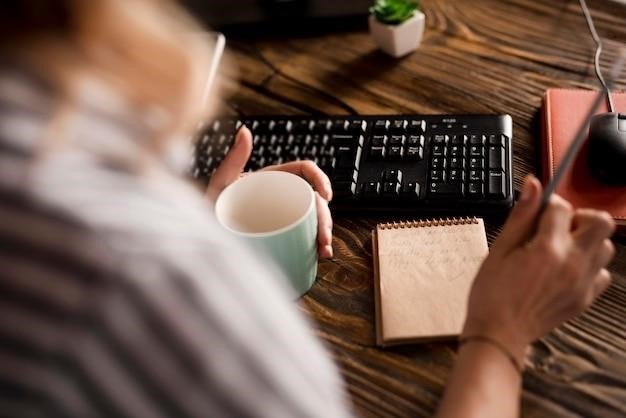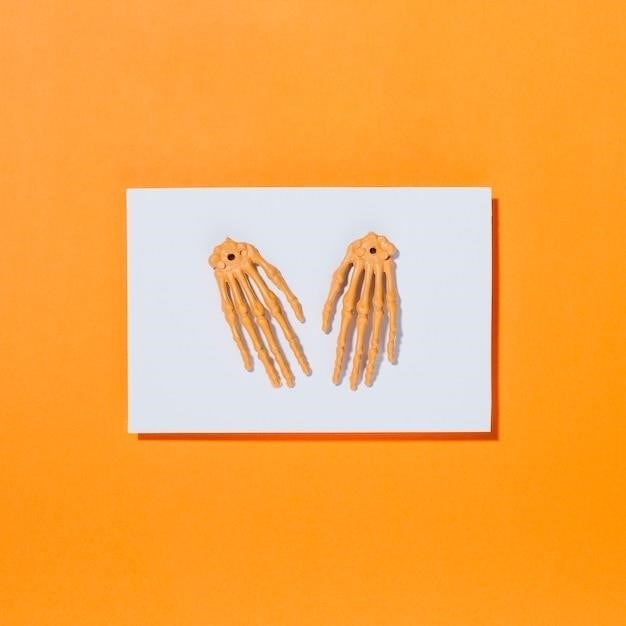Magis⁚ A Deeper Dive
Magis, a Latin word meaning “more,” “better,” or “fuller,” is a central concept in Ignatian spirituality. It signifies striving for a deeper connection with Christ and a greater commitment to serving others. This concept is embodied in the Jesuit motto, “Ad Majorem Dei Gloriam,” meaning “For the greater glory of God.” Magis is a powerful call to live a life of purpose and to make a positive impact on the world.
The Meaning of Magis
Magis, a Latin word, translates to “more,” “better,” or “fuller.” It’s a concept deeply rooted in Ignatian spirituality, a way of life inspired by Saint Ignatius of Loyola, the founder of the Society of Jesus (Jesuits). Ignatius used the Spanish word “más,” meaning “more,” to emphasize the idea of going beyond the ordinary, striving for excellence, and seeking a deeper connection with God. This concept is often associated with the Jesuit motto, “Ad Majorem Dei Gloriam,” which translates to “For the greater glory of God.” Magis embodies a commitment to seeking a deeper understanding of oneself and the world, embracing challenges, and striving to live a life of purpose and service. It’s not about doing more simply for the sake of doing more; it’s about doing what is most aligned with God’s will and serving humanity in a meaningful way.
Magis in Ignatian Spirituality
Within Ignatian spirituality, magis serves as a guiding principle for living a life of faith. It’s not merely about doing more, but about doing it better, more fully, and with greater intention. Ignatius of Loyola, in his spiritual exercises, encourages individuals to seek God’s will with greater fervor and commitment, pushing beyond comfort zones and embracing challenges. This pursuit of magis involves a constant discernment, a process of seeking God’s guidance in all aspects of life, and finding meaning and purpose in every endeavor. Magis encourages a spirit of generosity and service, urging individuals to use their talents and resources to make a positive impact on the world. It’s about finding joy in serving others and seeking to live a life that reflects the love of God. In essence, magis in Ignatian spirituality is a call to a life of depth, purpose, and service, guided by a profound love for God and a desire to make a difference in the world.
Magis in Action
Magis is not a passive concept; it’s a call to action. It manifests in various ways, pushing individuals to embrace challenges, pursue excellence, and make a difference. From the simple act of offering a helping hand to a stranger to undertaking ambitious projects that benefit communities, magis encourages going beyond the ordinary and seeking opportunities to make a positive impact. It’s about embracing a spirit of adventure and seeking to live a life of purpose and meaning. Whether it’s volunteering time and resources to a worthy cause, striving for excellence in one’s chosen profession, or simply being more present and attentive to those around us, magis guides us towards a life of greater engagement and service. It’s a reminder that we are called to use our talents and resources to make the world a better place, and that even small acts of kindness can have a profound impact.
The Application of Magis in Education
Magis has a profound impact on education, particularly within Jesuit schools. These institutions strive to foster a learning environment where students are challenged to think critically, engage in meaningful dialogue, and develop a strong sense of social justice. The magis approach encourages educators to go beyond the traditional classroom setting and create opportunities for students to learn through service, global engagement, and hands-on experiences. By embracing the magis spirit, Jesuit schools aim to empower students to become agents of change, equipped with the knowledge, skills, and values necessary to make a positive impact on the world. This commitment to magis extends beyond academic pursuits, encompassing student life, extracurricular activities, and the overall culture of the school.
Magis in the World
The concept of magis extends beyond the walls of Jesuit schools and finds expression in various aspects of global society. Individuals and organizations around the world are embracing the magis spirit, seeking to make a difference in their communities and beyond. This manifests in initiatives focused on social justice, environmental sustainability, and promoting peace and understanding. From grassroots movements to international organizations, magis inspires individuals to go the extra mile, to dedicate themselves to causes greater than themselves. Whether it’s volunteering time, donating resources, or advocating for change, the magis spirit motivates people to act with purpose and compassion, leaving a lasting positive impact on the world.
Magis in Technology
The spirit of magis finds its way into the world of technology, where innovation and progress are often driven by a desire to improve and enhance.
MAGIS eXpress⁚ Spatial Decision Support System
MAGIS eXpress is a spatial decision support system designed to assist in vegetation management projects, particularly in small landscapes. This program leverages spatial data and analysis to create optimized treatment plans and road activity schedules. By integrating various factors such as vegetation type, terrain, and environmental constraints, MAGIS eXpress helps users make informed decisions about how to best manage vegetation for desired outcomes. This software is designed for personal computers with Windows operating systems, making it accessible to a wide range of users. MAGIS eXpress promotes efficiency and effectiveness in vegetation management, contributing to a more sustainable and environmentally responsible approach to landscape management.
MAGIS Navi⁚ Digital Operator Guidance System
MAGIS Navi, developed by Altendorf, is a cutting-edge digital operator guidance system designed to simplify complex workflows in industrial settings. This intuitive software provides clear and reliable guidance to operators, step-by-step, through predefined cutting sequences. By eliminating confusion and potential errors, MAGIS Navi enhances productivity, accuracy, and safety in manufacturing processes. Its user-friendly interface and intelligent algorithms make it suitable for a wide range of applications, from woodworking to metal fabrication. MAGIS Navi empowers operators to perform complex tasks with confidence, leading to improved efficiency and reduced downtime. The system represents a significant advancement in digital operator assistance, contributing to a more streamlined and productive industrial environment.
MAGISK⁚ Rooting Android Devices
MAGISK is a powerful and popular tool in the Android community, designed to provide users with greater control over their devices. It enables the process of “rooting,” which grants users administrative privileges on their Android phones or tablets. This allows for a wide range of modifications, including installing custom ROMs, tweaking system settings, and blocking bloatware. MAGISK distinguishes itself by offering a “systemless rooting” approach, meaning it doesn’t modify the Android system partition directly. This preserves the device’s warranty and avoids potential issues with software updates. MAGISK’s modular system allows users to install “modules” that add specific functionalities or customize the device’s appearance. Its user-friendly interface and extensive community support make it a popular choice for both experienced and novice users seeking to enhance their Android experience.
Magis in Popular Culture
The concept of “magis” has found its way into various aspects of popular culture, reflecting its broader appeal and influence.
Magis in Dungeons and Dragons
In the realm of Dungeons and Dragons (D&D), “magis” embodies a sense of exceeding expectations and achieving greater feats. While not explicitly used as a term within the game’s mechanics, the spirit of “magis” resonates with the inherent drive for heroism and adventure that defines D&D. Players strive to overcome challenges, push their abilities to the limit, and achieve extraordinary accomplishments, embodying the essence of “magis” in their quests.
The concept of “magis” aligns with the core principles of D&D, where players are encouraged to embrace the unknown, embrace challenges, and strive for greatness. It inspires them to explore the depths of their characters’ potential, pushing boundaries and achieving feats that transcend the ordinary. Whether it’s mastering a powerful spell, conquering a formidable foe, or saving the world from impending doom, the spirit of “magis” guides players to achieve extraordinary results in the fantastical world of D&D.
Magis in Video Games
In the expansive world of video games, the concept of “magis” manifests in various ways, often serving as a driving force for players to push their limits and achieve greatness. From the relentless pursuit of high scores and achievements to the dedication to mastering complex game mechanics, players often embrace the spirit of “magis” in their gaming experiences. This dedication to exceeding expectations and striving for more is deeply ingrained in the culture of gaming, where players constantly seek to improve their skills and conquer challenges.
The concept of “magis” resonates with the inherent competitive nature of many video games, encouraging players to outperform their peers and strive for mastery. It also drives players to explore the depths of a game’s world, unraveling its mysteries, uncovering hidden secrets, and achieving the ultimate victory. Whether it’s conquering a challenging boss fight, completing a difficult quest, or achieving a flawless score, players strive to embody the spirit of “magis” in their pursuit of excellence within the virtual realm.
Magis in Music
Music, with its inherent power to move and inspire, often embodies the concept of “magis” through its ability to transcend boundaries and evoke profound emotions. Musicians, driven by their passion and commitment to their craft, strive to create music that goes beyond the ordinary, reaching for a higher level of artistry and expression. The pursuit of “magis” in music is evident in the dedication of composers to crafting intricate melodies, the tireless practice of musicians to perfect their technique, and the relentless pursuit of innovation by artists to push the boundaries of their genre.
From the soaring vocals of opera singers to the intricate rhythms of jazz ensembles, the spirit of “magis” resonates throughout musical history. Musicians who embody this spirit seek to create music that is not only beautiful but also meaningful, leaving a lasting impact on listeners. They strive to connect with their audiences on a deeper level, sharing their emotions and experiences through the universal language of music. The pursuit of “magis” in music is a testament to the power of art to inspire, uplift, and transform.
Magis in Art
The concept of “magis” finds a powerful expression in the world of art, where artists strive to transcend the limitations of form and expression, seeking to create works that resonate deeply with viewers. This pursuit of “magis” is evident in the dedication of artists to mastering their craft, pushing the boundaries of their medium, and exploring new ways to communicate their vision. From the meticulously crafted details of Renaissance paintings to the abstract expressions of modern art, “magis” is the driving force behind artistic innovation and the pursuit of beauty and meaning.
Whether it is a sculptor meticulously chiseling away at a block of marble, a painter layering colors to create a breathtaking landscape, or a photographer capturing a fleeting moment in time, the artist’s commitment to “magis” is evident in their unwavering dedication to their craft. Their work seeks to not only capture the essence of the world around them but also to evoke emotions, inspire reflection, and challenge conventional perspectives. The pursuit of “magis” in art is a testament to the power of human creativity to create works that transcend time and inspire generations.

The Impact of Magis
Magis has had a profound impact on individuals, communities, and institutions, inspiring a commitment to excellence, service, and social justice.
Magis in Jesuit Schools
Jesuit schools around the world embrace the concept of magis as a core principle in their educational philosophy. The pursuit of magis encourages students to strive for excellence in all areas of their lives, not just academics, but also in their personal growth, service to others, and commitment to social justice. Jesuit schools often incorporate Ignatian pedagogy, which emphasizes reflection, discernment, and a commitment to finding God in all things, into their curriculum and daily life. They encourage students to engage with the world around them, to critically examine their beliefs and values, and to use their talents and gifts to make a positive impact on the world.
Magis in the Global Community
The spirit of magis extends beyond Jesuit schools and institutions, influencing various sectors of the global community. Organizations like Educate Magis, a global network of Jesuit and Ignatian schools, promote the sharing of best practices and resources to foster a more interconnected and collaborative educational environment. The concept of magis also inspires initiatives focused on social justice and global development. Non-profit organizations and NGOs often adopt a magis-driven approach, striving to make a tangible difference in the lives of marginalized communities and addressing pressing global issues like poverty, inequality, and environmental sustainability. The pursuit of magis serves as a powerful motivator for individuals and organizations to act with compassion, purpose, and a commitment to making the world a better place.
The Future of Magis
The spirit of magis is poised to continue its influence in the future, shaping various aspects of society. With advancements in technology, the concept of magis can be applied to new and innovative initiatives. The development of AI and machine learning presents opportunities to create more effective solutions for complex global challenges, aligning with the magis principle of striving for greater impact. Furthermore, the growing awareness of social responsibility and sustainability will likely drive the adoption of magis-inspired approaches in business and industry. As the world faces increasing interconnectedness, the pursuit of magis will play a crucial role in fostering collaboration, innovation, and a collective commitment to building a more just and sustainable future for all.
























